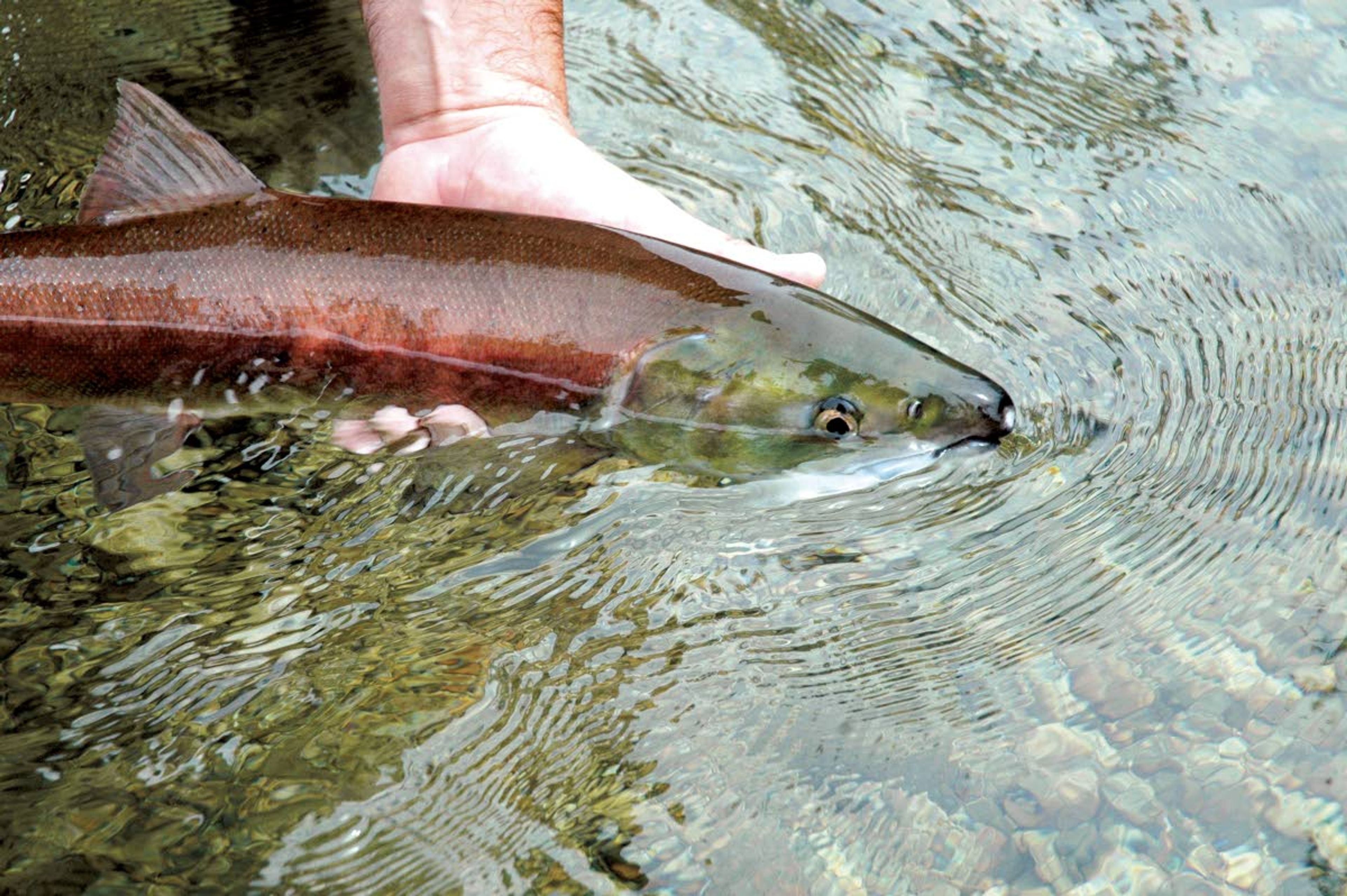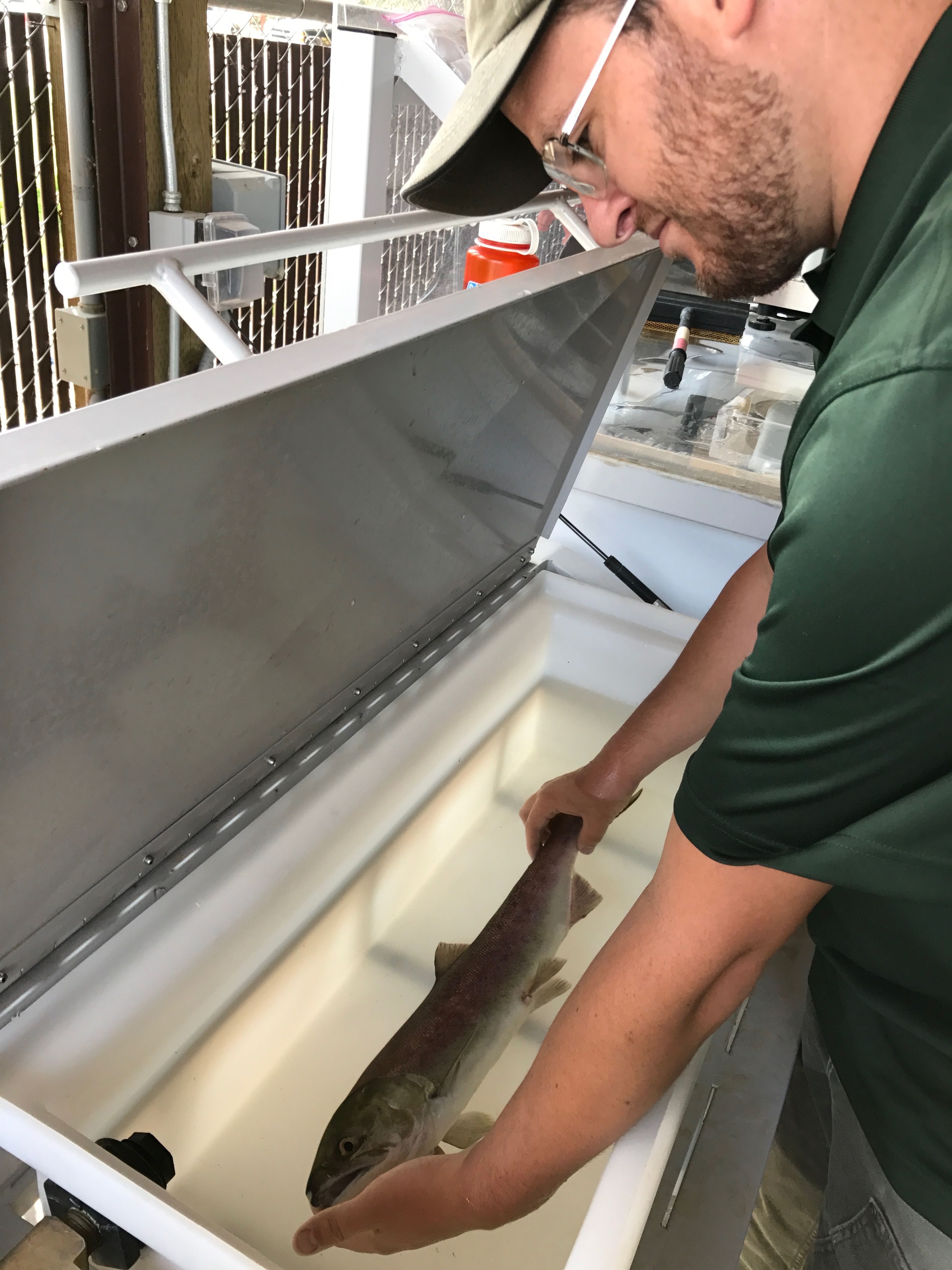Sockeye begin epic Northwest journey
Salmon species off to good start but will be challenged by low flows and high temperatures
Snake River sockeye salmon are making a good showing at Bonneville Dam, but the endangered fish must contend with rising water temperatures to complete their daunting 900-mile journey back to Idaho.
Sockeye spawn in the large lakes of the Sawtooth Basin and are critically endangered. While a small number of individuals still spawn in the wild, the fish survive largely because of a three-decade-old captive brood program that kept them from blinking out.
Only 23 sockeye returned to the Stanley Basin in the 1990s, which included two years when no fish made the journey. They were listed as endangered in 1991. The next year, only a single male adult sockeye returned to Idaho. He was given the name Lonesome Larry and became part of a desperate effort to save the fish.
Idaho, the Shoshone-Bannock Tribe and the federal government had started a hatchery brood program. Sockeye that made the trip were captured and spawned in a hatchery. Most of their offspring spent their entire lives in captivity. Slowly, as numbers built in the captive brood program, more and more juvenile sockeye were released and allowed to migrate to the ocean. Eventually, some adults were allowed to spawn in Redfish, Pettit and Alturas lakes — cold, clear water catchments at the base of Idaho’s famed Sawtooth Mountain Range.
In 2013, the state opened the Springfield Hatchery that now raises and releases 1 million sockeye smolts annually. Its promise of boosting annual sockeye numbers has yet to be realized. But there have been some rays of hope. Last year, 774 adult sockeye returned to the Sawtooth Basin, the most since the hatchery reached full production. Returns this year could be similar despite the fast start.
As of last week, more than 226 Snake River sockeye implanted with tracking tags had been detected at Bonneville Dam on the Columbia River. Because only a percentage of hatchery and wild sockeye are tagged, Eric Johnson, a sockeye biologist for the Idaho Department of Fish and Game said that expands to an estimate of 4,450 passing the dam. That is the best showing since 2012.
With average survival rates, about a quarter of those would be expected to reach central Idaho. However, Johnson said the fish don’t appear to be achieving average survival this year. He is predicting about 700 fish will return to the basin.
Sockeye enter freshwater just as spring is merging into summer and temperatures are rising. That makes them especially vulnerable to climate change. Hot weather this summer, combined with below-average flows on the Columbia and Snake rivers has resulted in elevated water temperatures that can be harmful to salmon.
“I think temperatures are significant this year,” Johnson said, noting they are above average but not as high as they were in 2015 when hot water killed thousands of sockeye.
He said at least one adult sockeye salmon has been detected in the Salmon River, about 60 miles downstream of where the fish are trapped and collected for hatchery spawning.
“This week or this weekend, I expect to get a fish in the trap,” he said.
Barker may be contacted at ebarker@lmtribune.com or at (208) 848-2273. Follow him on Twitter @ezebarker.











